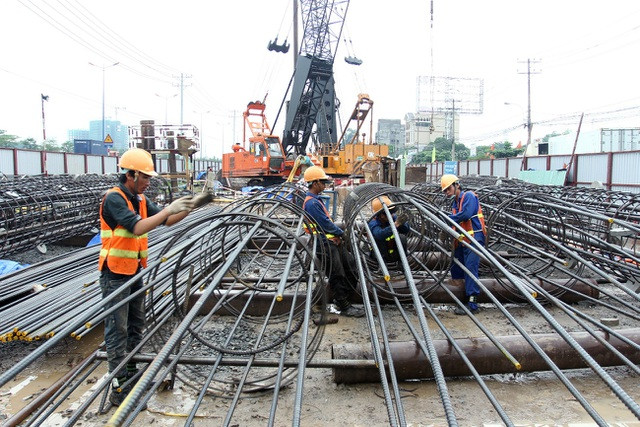 The disbursement of public investment was estimated at 398 trillion VND as of the end of December, meeting 82.8 percent of the Government’s plan, the highest rate in the past five years. (Photo: dantri.com.vn)
The disbursement of public investment was estimated at 398 trillion VND as of the end of December, meeting 82.8 percent of the Government’s plan, the highest rate in the past five years. (Photo: dantri.com.vn)Hanoi (VNS/VNA) - The disbursement of public investment was estimated at 398 trillion VND (17.24 billion USD) asof the end of December, meeting 82.8 percent of the Government’s plan – thehighest rate in the 2016-20 period, according to the Ministry of Planning andInvestment.
Deputy Minister of Planning and Investment Tran Quoc Phuong said that therecord level was attributed to the Government’s determination in speeding up thedisbursement of public investment as a major driver for economic growth in thecontext of the COVID-19 pandemic.
In comparison, the disbursement rates were 80.3 percent, 73.3 percent, 68,87 percentand 67.46 percent in 2016, 2017, 2018 and 2019, respectively.
The disbursement of public investment sourced from the State budget wasestimated at 91.1 percent of the 2020 plan, the highest rate in the past tenyears.
Seventeen ministries, central-level agencies and 17 provinces and cities haddisbursement rates of 80 percent or higher. However, 13 ministries andcentral-level agencies and five localities reported public investmentdisbursement rates of below 60 percent.
Still, the disbursement missed the Government’s target although publicinvestment was identified to be the key driver for economic growth in thecontext of the COVID-19 pandemic.
The ministry pointed out that some major projects had very low disbursementrates.
For example, for the project of land clearance, compensation and resettlementfor Long Thanh International Airport, the disbursement rate to date was only27.69 percent of the plan.
The ministry said that the COVID-19 pandemic was also significantly affectingthe progress of public investment disbursement as well as the implementation ofpublic-funded projects.
According to Phuong, the Law on Public Investment No 39/2019/QH14 took effectfrom the beginning of this year to replace the Law on Public Investment No49/204/QH13.
The new law regulated that ministries and localities must disburse allallocated public investment within the year and the sum which failed to bedisbursed would be deducted from the planned medium-term public investment forthat agency or localities, Phuong said, adding that with this regulation, thepublic investment plans of localities and ministries were expected to be moreaccurate and feasible.
With the new law, failure to disburse public investment would be a very bigproblem as the accountability would be enhanced, he said, adding that carefulconsideration must be given to developing public investment plans to improveefficiency of public investment.
Public investment mainly focused on developing key social-economicinfrastructure systems which played an important role in attracting private andforeign investment into the economy and contributed to maintaining reasonableeconomic growth.
According to the General Statistics Office, every increase by one percent inpublic investment disbursement would push up GDP by 0.06 percentage points./.




























